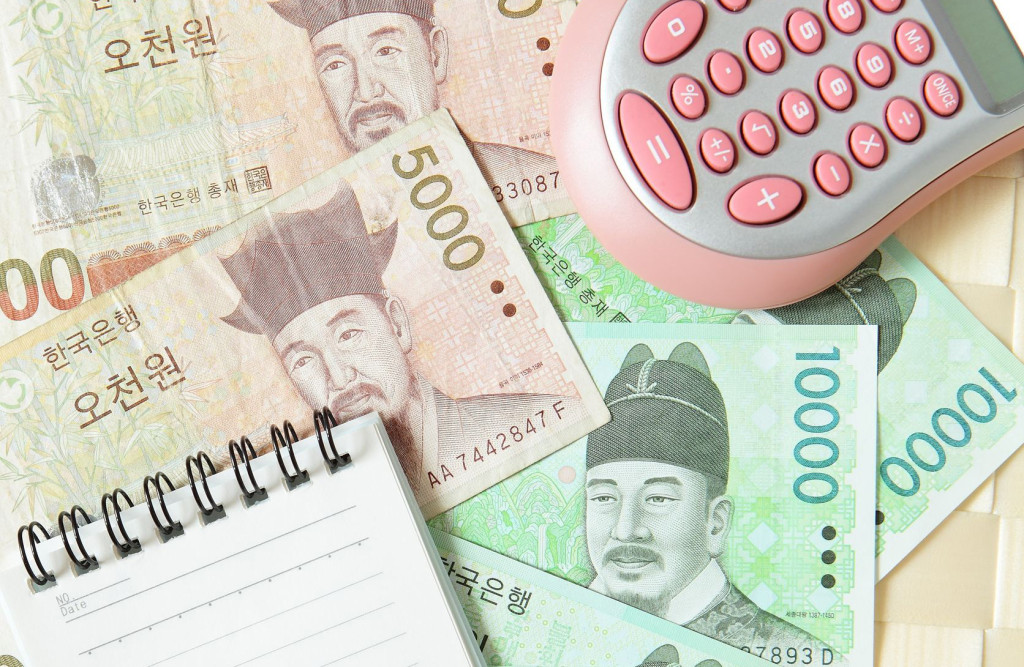
Plenty of meals can be had for less than 10,000 won. Photo © Shao-Chun Wang/123rf.
“How much does it cost to live in South Korea?” is one of those questions like “How long is a piece of string?”—the answer is, it depends. Try to replicate the suburban North American or British life here, living in a stand-alone house with a good-sized yard and shopping for things like steaks and cheese every day, and your expenses will be astronomical, since all these things will cost two or three times what they would back home. At the other extreme, live in a small apartment in a provincial city, get by on public transport, and stick mainly to Korean food, and this can be a very cheap place indeed.Location is another important factor in working out a monthly budget. People tend to burn through cash more quickly in larger cities such as Seoul and Busan not only because rents are higher but because the array of restaurants, events, and department stores is a constant source of temptation to spend.
In almost every town, the university districts have an abundance of cheap, often dormitory-style accommodations that may suit a young student or single person; they typically cost around 300,000 won per month.
Utility costs are fairy consistent throughout the country. In a midsize dwelling, plan on spending around 70,000 won per month on electricity and/or gas (many apartments use a mix of both for heating and cooking). This can rise substantially in the peak winter and summer months when heating or air-conditioning is used. Water costs are often bundled into maintenance fees but, if broken out separately, will be about 10,000 won per month. Utility charges, especially in newer apartment blocks, are sometimes combined into a single monthly management fee based on the size of a dwelling—look into these before signing any rental contracts as they’re typically charged at above the standard government rates and can turn a place that sounded like a bargain into something unaffordable.
Unlimited broadband Internet services, which are about the only type on offer for most South Korean homes, cost about 30,000 won per month, and cable with a limited selection of international channels is around the same amount. Phone bills—fixed and mobile lines—start in the 25,000-30,000 per month range.
Groceries are a bit of a mixed bag. Basically, if it’s something produced locally, it’s probably cheaper than it would be in your home country—things like tofu, vegetables, pork, chicken, and seafood are all relative steals. But there are several exceptions to this rule—some fruit, such as locally grown pears and melons, are very pricey, especially out of season, and South Korean beef commands a hefty premium over that imported from the United States or Australia. Local wet markets have the best bargains on produce but can be tough to navigate without Korean language skills. Most expatriates end up doing their food shopping at the nearest branch of a megastore chain like E-mart, which has a wide selection and fair (if not especially low) prices. Supermarkets specifically geared toward foreigners are usually more expensive. A grocery budget of 100,000 won per week should be enough to keep the average expatriate in plenty of food with a limited number of non-Korean luxuries such as cheese or wine; double or triple that figure for a family or those who need to consume a lot of imported comforts.
Entertainment and travel costs also have to be factored into a budget but aren’t massive unless you’re a loyal patron of the hottest high-end nightclubs and top hotels. Plenty of meals can be had for less than 10,000 won, and a good night out at a local pub will rarely run more than 30,000 won or so, as long as you’re prepared to stick to domestic beers or spirits. Domestic transport and accommodations tariffs are very low by Western standards—Seoul-Jeju, one of the most expensive flights in the country, is around 80,000 won, for example. However, while a few budget carriers have emerged, the era of low-cost international travel has yet to truly arrive in South Korea, so plan on spending 400,000 won or more on plane tickets even to the countries next door. Day-to-day medical expenses, especially if you’re enrolled in the national insurance scheme, are also nothing to worry about—a typical consultation at a hospital or clinic, including medication fees, will cost 10,000-20,000 won. However, prices can be higher at international clinics and may also snowball quickly if long-term care is required.
Excerpted from the Second Edition of Moon Living Abroad in South Korea.